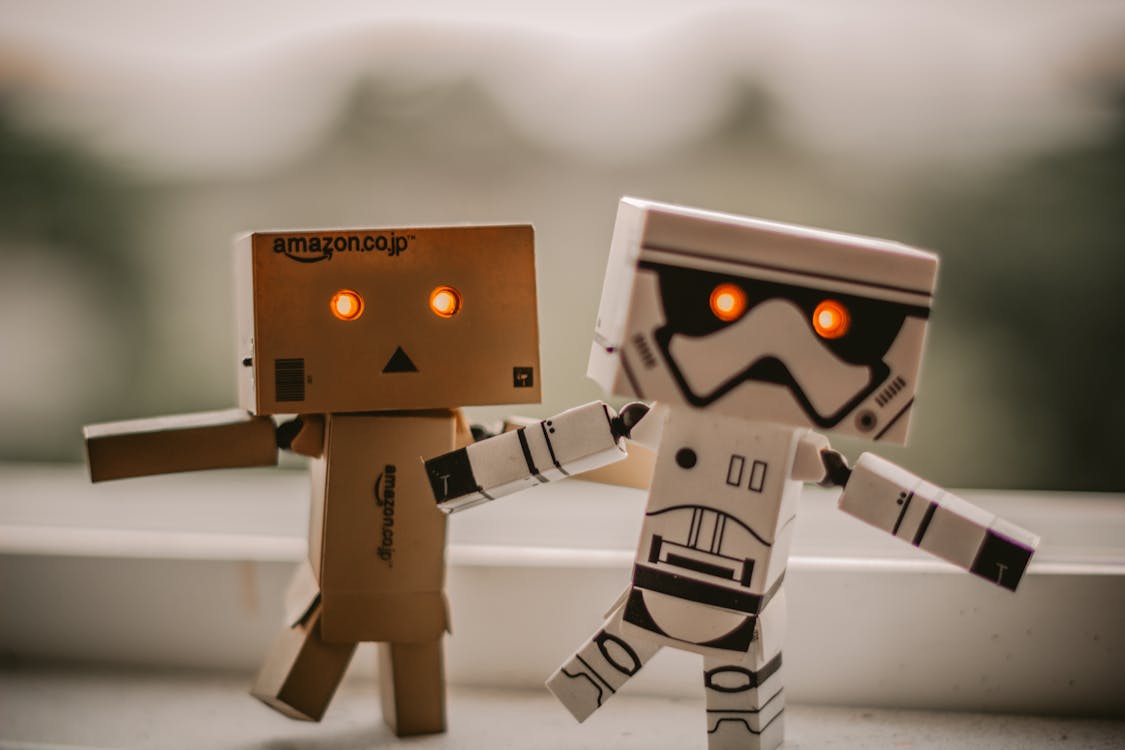21 Feb 2018
Artifical Intelligence, the Paradigm Shift
Artificial Intelligence (AI) is the pinnacle of human dreams – to create machines that can talk, think and feel like humans. The idea has been around for a long time. The term “artificial intelligence” was coined in 1965 on the campus of Dartmouth College. Research in the field of AI has seen a lot of ups and downs Since the 21st century, investment and interest towards this field has bloomed and seems very promising. It is not surprising that as much as exciting and ambitious as this Artificial Intelligence have been, it is not short of controversies. There is a growing counter side that is worried about the advent of machines that will outsmart humans.

What is AI
Artificial intelligence (AI) would be the possession of intelligence, or the exercise of thought, by machines such as computers.[1] Does this mean that we are trying to recreate the intellectual abilities of the human brain? Yes, that would be the ultimate aim. For now, the scientific discipline of AI has defined by Marvin Minsky is as follows - “the science of making machines do things that would require intelligence if done by men”.[2] General AI is a very broad field. It has many distinct disciplines.
-
Cognitive Computing is the discipline that deals with intelligent hardware that learns, responds and matures over time. The IBM Watson is a great example of this discipline. The speech recognition and face detection technologies used in Watson relies on cognitive computing technologies. The emphasis is placed on simulating human thought process in a machine.
-
Machine Learning (ML) is actually a subset of AI. It involves using techniques, which may be algorithms or logical rules to extract actionable insights from a huge bulk of data. ML is used to make a process smarter by training it based on the actions it followed previously and the circumstances these actions led to. Algorithms such as Naive Bayes and Support Vector Machines are applied to the data collected to produce the outputs. The process can be trained using Supervised learning or Unsupervised learning techniques.
-
Deep Learning (DL), as the name sounds, it aims at identifying complex patterns in a vast data using large computational power and mathematical models. DL uses advanced and deeper neural networks with more layers. The extra layers mean it can identify more characteristics, but it also means that it will take more time to calculate the results. Initially, companies relied on GPUs to perform these tasks. These days, the advancement in the Cloud Computing field has enabled scientists to club together multiple VMs and run these neural networks.
Where will it be used
We are already using AI in our daily life’s. The Virtual assistants that we use in our smartphones serve us information based on our preferences and usage history. The use of AI in video games is a fast-growing field that has made the games more realistic and unpredictable. Self-driving cars have also entered the market and shown that they are less prone to accidents compared to their human counterparts. The recommendation service provided by online retailers and music streaming websites rely on intelligent systems to retain their customers. There are many areas of our life where AI is believed to have a large impact.

-
Healthcare is already undergoing a huge transformation and AI technologies are accelerating this process. From medical bots that analyze the symptoms of a patient, to designing treatment plans based on past medical records and even early detection of life-threatening diseases, AI has penetrated the industry like no other. A large number of companies have invested in technologies that will revolutionize the healthcare industry. Efforts are underway to develop robots that will assist the elderly and play with young children; interacting with them and giving them company.
-
Disaster Prevention is a hurdle for all nations across the globe. Natural disasters itself cannot be prevented, but knowing when and where they will hit, helps us to reduce the damage caused and save lives. There are systems in place that uses machine learning to automatically identify disaster-related tweets and calls for SOS. This will help alert the government and volunteer agencies to act faster during the disaster mitigation. The Qatar Computing Research Institute (QCRI) is one such system. The CSIRO, Australia has even come up with a system to predict fire hotspots by studying the Australian climate maps for a period of 10 years.[3] These AI systems will help save a lot of human lives.
-
Cyber Attack Detection is the biggest requirement in the IT world today. The theft of confidential information can lead to huge losses for a company and it can also send countries to war. There is also a dearth of talent among security professionals to prevent such attacks. This is where AI pitches in. It can learn the patterns networking devices, packet flows and investigate any deviations that could reveal an in-progress attack. StackPath is one such company that promises to secure the network using AI technologies. In the 2016 DARPA Cyber Grand Challenge, AI bots took to the stage. They discovered and patched many of the bugs.[4] The winning bot, Mayhem competed against human teams and even beat them at several stages of the competition.
-
Military has always been the measure of a Nation’s power. In the constant race to maintain military advantage, nations make use of cutting-edge technologies to sharpen their arsenal. AI is no stranger to this use-case. Drones and remote-controlled vehicles are regularly used to do tasks that are considered dangerous for humans. They are used in gathering combat intelligence, for patrolling routes, for diffusing bombs, inside training simulators and the list goes on. Defense Research uses AI not just make weapons smarter, but to also increase the safety of soldiers.
-
Cyborg Technology looks forward to augmenting the human brain with computational intelligence and thereby transform our way of thinking. It is the human brain that makes humans intelligent. Since evolution will not make us smarter in the near future, Scientists believe Cyborg technology can. It is possible that these ‘neuro-prosthetics’ will give us additional cognitive or sensory abilities. Brain-computer interfaces have already been used for amputees to give control over their robotic limbs. The symbiosis between man and machine promises to unlock the shadows of the unknown. This sure is an emerging field that will raise many eyebrows.
What Now

With so many applications for AI, it is no wonder that the future will change forever. But the question that remains is what will happen to the human race? There is still a long way to go before an Artificially Intelligent system can outperform the human brain in all aspects. However, they will disrupt the job market. Similar to how automation rendered the human task force jobless, AI machines will do the same and even more. Job losses are an inevitable impact. In the long run, machines might even create more meaningful and satisfying jobs. The bottom line is that AI and related technologies will open doors that we never knew existed. It will shape a world that is different from the present. It will usher in a new revolution, which for those who manage it properly will help them lead a prosperous life.
References
- [1] Internet Encyclopedia of Philosophy
- [2] Britannica article on Marvin Misky
- [3] Fighting fire with (artificial) intelligence
- [4] Autonomous Security Bots Seek and Destroy Software Bugs in DARPA Cyber Grand Challenge
Congrats on reaching the end of this post 🙌
Until next time, stay curious and keep learning!